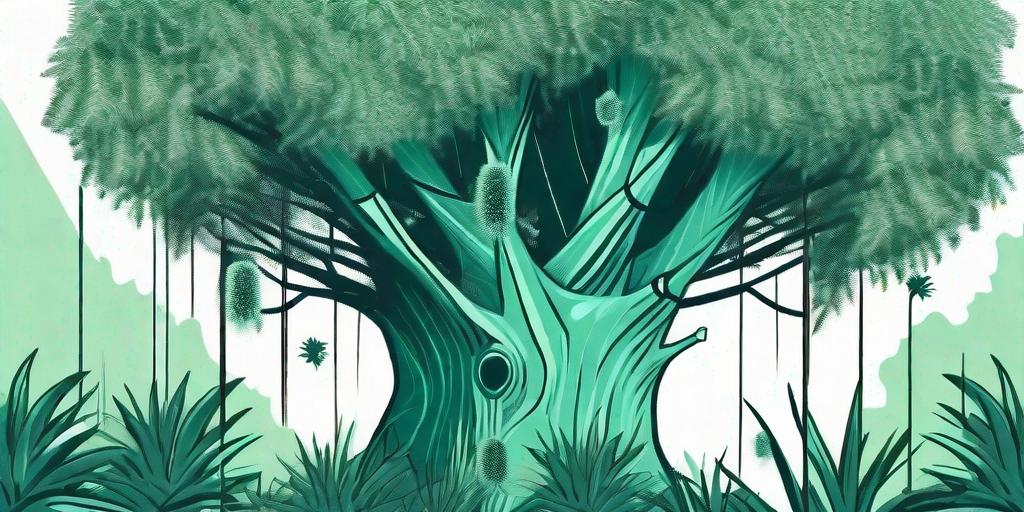
Welcome, brave soul, to the world of the Sandbox Tree, also known as the Dynamite Tree, Monkey's Dinner Bell, or if you're a botanist, Hura crepitans. This tree is not your typical leafy friend. It's a botanical nightmare, armed with poisonous seeds, exploding fruit, and a bark that's covered in spikes. But fear not, dear reader, for this guide will help you navigate this dangerous terrain with both your limbs and your sense of humor intact.
Understanding the Beast: A Brief Overview of the Sandbox Tree
The Sandbox Tree's Deadly Features
First things first, let's get to know our adversary. The Sandbox Tree grows up to 200 feet tall, making it a formidable presence in the tropical rainforests of North and South America. Its trunk is covered in conical spikes, which are sharp enough to puncture a car tire. But the real danger lies in its fruit. When ripe, the fruit explodes, launching seeds at speeds of up to 150 miles per hour. And if that wasn't enough, the seeds are also highly poisonous if ingested.
Now, you might be thinking, "Why on earth would anyone want to go near this tree?" Well, despite its deadly nature, the Sandbox Tree has been used for centuries for its medicinal properties. Its sap has been used to treat skin conditions, while its seeds have been used to make poison for hunting. So, while it's a dangerous foe, it's also a valuable ally if you know how to handle it.
Where to Find the Sandbox Tree
The Sandbox Tree thrives in tropical climates, particularly in the rainforests of the Americas. It can also be found in parts of Africa and the Pacific Islands. So, if you're planning a trip to these regions, it's a good idea to familiarize yourself with the Sandbox Tree and its deadly features.
But don't worry, it's not all doom and gloom. The Sandbox Tree is actually quite rare, and it's unlikely that you'll stumble upon one unless you're actively looking for it. But as the saying goes, "Better safe than sorry."
Surviving the Sandbox Tree: A Step-by-Step Guide
Step 1: Identifying the Sandbox Tree
Before you can avoid the Sandbox Tree, you need to know what it looks like. It's a tall tree with a straight trunk covered in dark, conical spikes. Its leaves are large and shiny, and its fruit is pumpkin-shaped and about the size of a large grapefruit. If you see a tree that fits this description, give it a wide berth.
Remember, the Sandbox Tree's fruit is its most dangerous feature. If you see a tree with large, pumpkin-shaped fruit, it's best to steer clear. The fruit can explode without warning, launching seeds in all directions. And trust us, getting hit by a seed traveling at 150 miles per hour is not a fun experience.
Step 2: Avoiding the Sandbox Tree
Once you've identified the Sandbox Tree, the next step is to avoid it. This might seem like a no-brainer, but it's easier said than done. The Sandbox Tree is a master of disguise, and it can blend in with other trees in the rainforest. So, always keep your eyes peeled and stay alert.
And remember, the Sandbox Tree's bark is covered in spikes, so don't lean against it or try to climb it. If you accidentally touch the tree, don't panic. Just wash the area with soap and water as soon as possible to avoid any potential skin irritation.
Step 3: Dealing with the Sandbox Tree's Poison
If you accidentally ingest the Sandbox Tree's seeds, seek medical help immediately. The seeds contain a poison that can cause vomiting, diarrhea, and in severe cases, death. So, if you're foraging for food in the rainforest, it's best to stick to plants you know are safe.
And remember, the Sandbox Tree's sap can also cause skin irritation. If you come into contact with the sap, wash the area thoroughly with soap and water. If the irritation persists, seek medical help.
FAQs about the Sandbox Tree
Is the Sandbox Tree really that dangerous?
Yes, the Sandbox Tree is as dangerous as it sounds. Its fruit can explode without warning, launching seeds at high speeds. And if that wasn't enough, the seeds are also poisonous if ingested. So, it's best to give this tree a wide berth.
Can I use the Sandbox Tree for medicinal purposes?
While the Sandbox Tree has been used for centuries for its medicinal properties, it's not recommended for amateur herbalists. The tree's seeds and sap are highly poisonous, and improper handling can lead to serious health problems. So, unless you're a trained professional, it's best to leave this tree alone.
What should I do if I come into contact with the Sandbox Tree?
If you accidentally touch the Sandbox Tree, wash the area with soap and water as soon as possible to avoid any potential skin irritation. If you ingest the tree's seeds, seek medical help immediately.
Conclusion
Surviving the deadly embrace of the Sandbox Tree is no easy feat, but with the right knowledge and precautions, it's entirely possible. So, the next time you find yourself in the tropical rainforest, remember to keep your eyes peeled for this dangerous plant. And most importantly, keep your sense of humor intact. After all, there's nothing like a good tree joke to lighten the mood.
So, here's one to get you started: Why don't trees ever get lost? Because they always stick to their roots!















